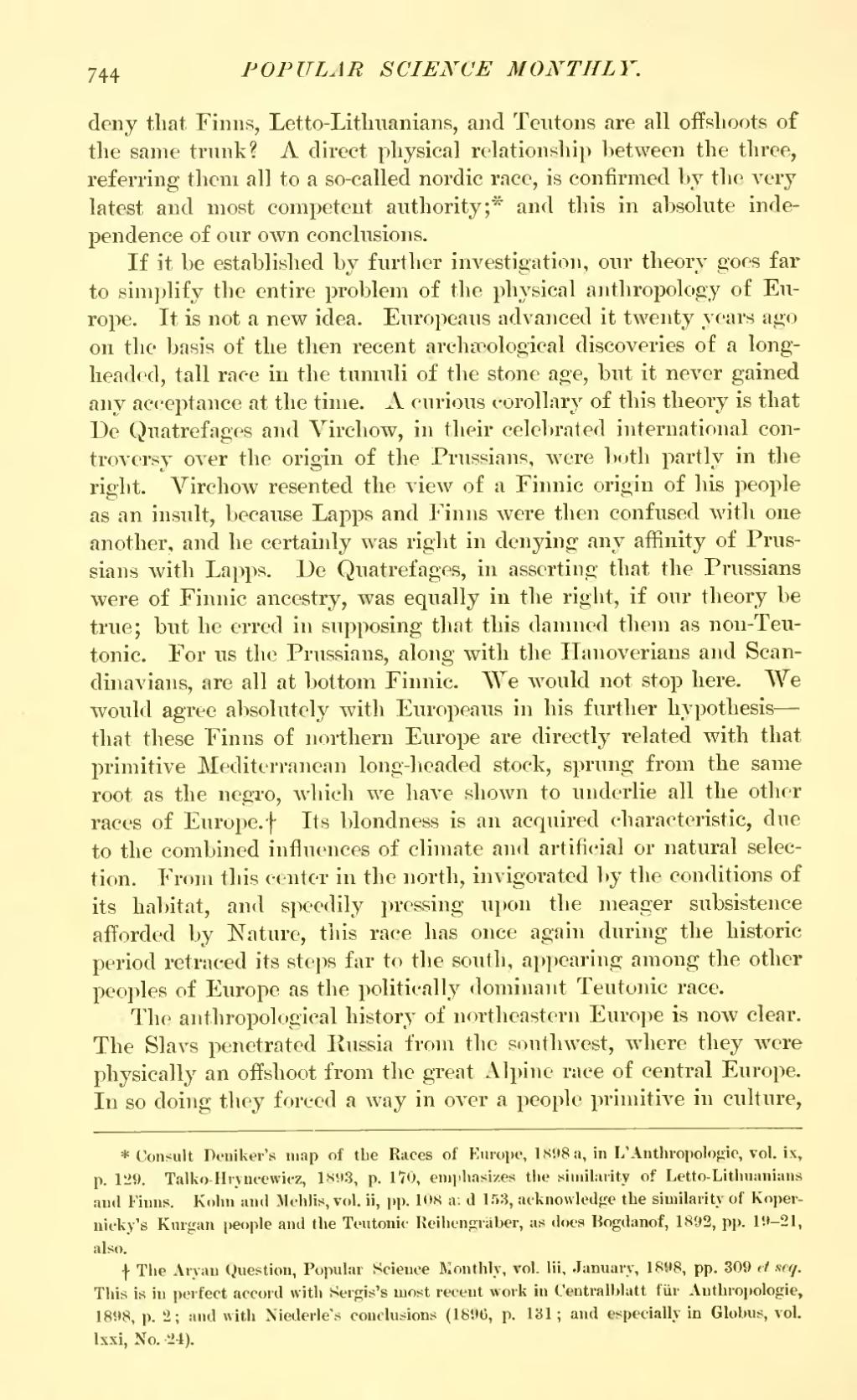deny that Finns, Letto-Lithuanians, and Teutons are all offshoots of the same trunk? A direct physical relationship between the three, referring them all to a so-called nordic race, is confirmed by the very latest and most competent authority;[1] and this in absolute independence of our own conclusions.
If it be established by further investigation, our theory goes far to simplify the entire problem of the physical anthropology of Europe. It is not a new idea. Europeans advanced it twenty years ago on the basis of the then recent archæological discoveries of a long-headed, tall race in the tumuli of the stone age, but it never gained any acceptance at the time. A curious corollary of this theory is that De Quatrefages and Virchow, in their celebrated international controversy over the origin of the Prussians, were both partly in the right. Virchow resented the view of a Finnic origin of his people as an insult, because Lapps and Finns were then confused with one another, and he certainly was right in denying any affinity of Prussians with Lapps. De Quatrefages, in asserting that the Prussians were of Finnic ancestry, was equally in the right, if our theory be true; but he erred in supposing that this damned them as non-Teutonic. For us the Prussians, along with the Hanoverians and Scandinavians, are all at bottom Finnic. We would not stop here. We would agree absolutely with Europeans in his further hypothesis—that these Finns of northern Europe are directly related with that primitive Mediterranean long-headed stock, sprung from the same root as the negro, which we have shown to underlie all the other races of Europe.[2] Its blondness is an acquired characteristic, due to the combined influences of climate and artificial or natural selection. From this center in the north, invigorated by the conditions of its habitat, and speedily pressing upon the meager subsistence afforded by Nature, this race has once again during the historic period retraced its steps far to the south, appearing among the other peoples of Europe as the politically dominant Teutonic race.
The anthropological history of northeastern Europe is now clear. The Slavs penetrated Russia from the southwest, where they were physically an offshoot from the great Alpine race of central Europe. In so doing they forced a way in over a people primitive in culture,
- ↑ Consult Deniker's map of the Races of Europe, 1898 a, in L'Anthropologie, vol. ix, p. 129. Talko-Hryneewicz, 1893, p. 170, emphasizes the similarity of Letto-Lithuanians and Finns. Kohn and Mehlis, vol. ii, pp. 108 a; d 153, acknowledge the similarity of Kopernicky's Kurgan people and the Teutonic Reihengräber, as does Bogdanof, 1892, pp. 19-21, also.
- ↑ The Aryan Question, Popular Science Monthly, vol. lii, January, 1898, pp. 309 et seq. This is in perfect accord with Sergis's most recent work in Centralblatt für Anthropologie, 1898, p. 2; and with Niederle's conclusions (1896, p. 131; and especially in Globus, vol. lxxi, No.-24).
